Netflix’s ‘House of Flowers’ Has No Flowers
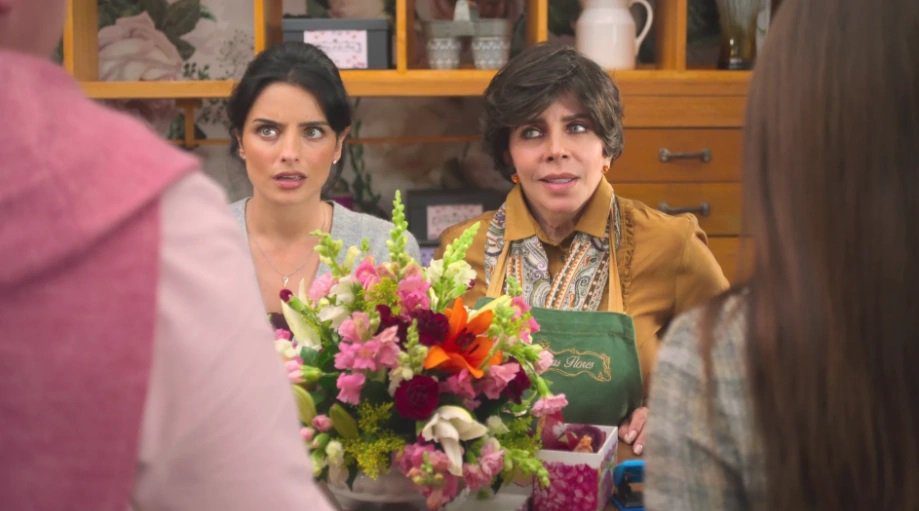
There are flowers everywhere in “House of Flowers” – the Mexican telenovela in its second, wildly popular season on Netflix, thanks to dubbing, crazed story lines, an attractive cast and lots of shapely men’s buttocks. There are flower supergraphics on the walls. The episode titles are flower names, each spelling out a specific flower meaning. The plot is about the de la Mora family, who for 50 years have run Casa de las Flores in Mexico City. But there aren’t any flowers planted around the circular driveway and fountain that seems to be the focus of every opening shot.
It’s a glamorous series, one part a dissection of family business, a la “Succession,” another part over-wrought plot lines as in “Jane the Virgin.” Plus a vast, colorful mansion, sex scenes of every stripe and ball gag, a cabaret also called Casa de las Flores, bawdy language and drag queens.
 Recommended: Netflix’s ‘The Big Flower Fight’ Is Here
Recommended: Netflix’s ‘The Big Flower Fight’ Is Here
The opening titles are swathed in flowers. In Season One, a giant Dali-esque, Surreal painting of the family intertwined with flowers dominates a wall in the mansion, above. In Season Two, a more grotesque painting takes its place – fewer flowers, more Surrealism, more distance between family members. By season two, the de la Moras have lost their flower business and the plot is so convoluted with mixed parentage, secrets, double-crosses and various trips to jail that keeping notes would not be out of order. Or viewers can just go with the flow, and enjoy the brilliant art direction.
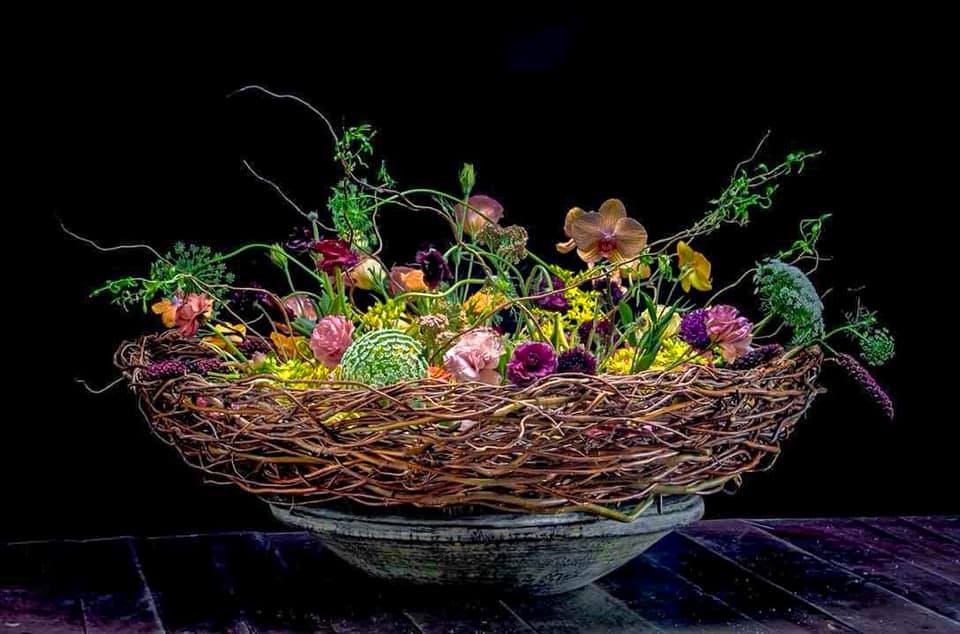
The problem for the de la Moras is that they (or their set decorators) don’t seem to know much about flores. Their fallback flower is the snapdragon. Second place goes to lilies. Roses, of course, are a mainstay and dianthus (carnations) turn up often, usually ruffled pink. The range of colors runs the gamut from white to pink and back again, with an occasional (and not very felicitous) splash of another color. Green sedum is a filler of choice.
Recommended: Jill Kargman Survives Quarantine with Black Flowers and Humor
The gorgeous younger daughter, Elena, seen above at left with her mother, Virginia, is a nymphomaniac with bad taste in boyfriends. In the first episode of Season Two she is a failed architect who was merely reprimanded when a building she designed fell down while under construction. (Apparently the architectural firm she worked for does not employ structural engineers.) Later in Season Two, she decides that she will be the one to run a new business, Kiosk de las Flores. Her level-headed older sister, Paulina, had already assumed she would run the business.
But the gorgeous Elena, played by Aislinn Derbez, says, look at this lovely bouquet I have made with my architectural training.
She is referring to a giant pail of white snapdragons into which she is inserting a few fillers, perhaps pink yarrow. There is no flower arrangement. It might as well be a florist’s holding bucket.
Voila!
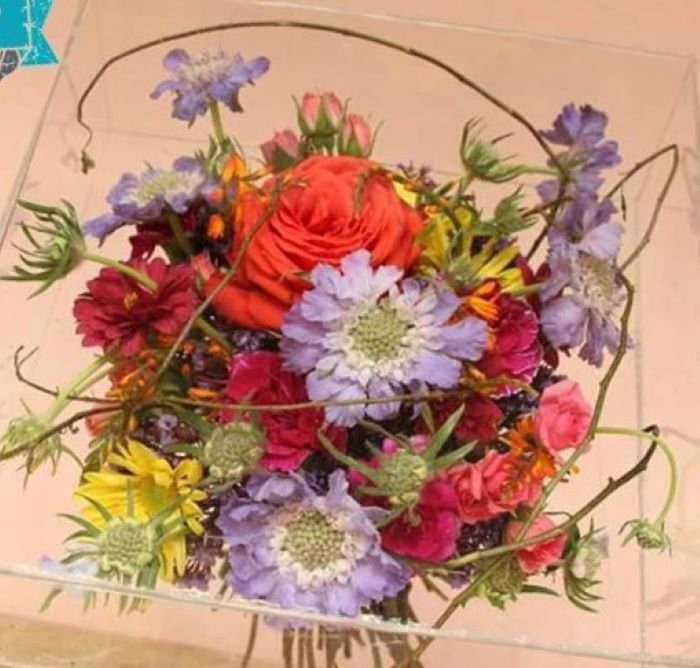
There is no artistry evident in the work of the de la Moras. However famous the family has become – famous enough so that a reporter/photographer from “Vanity Fair” (presumably Mexico) is lurking about to do a story – they do not appear to have developed any style with their floral masterpieces.
Someone like the internationally celebrated florist Leopoldo Gomez, based in Mexico City, would blow the de la Moras out of the water in a face-to-face competition. His work, like the one above, not only uses interesting material, but also mixes interesting specimens, colors and textures. Gomez, who competed at the Philadelphia Flower Show in February, is known for his vibrant use of color (“I am Mexican,” he says) and uses vines, twigs, leaves and seed pods to add structure to his arrangements. He also delivers his flowers in interesting containers, like the plastic box he used below for this tender arrangement of roses and pincushion flowers.
Not so the de la Mora flower shop, which seems to hand flowers out in simple bouquets. The business was founded by a matriarch, as are many flower businesses in Mexico. And Casa de las Flores is very old fashioned. It’s hard to see how it would survive in a modern Mexico City.
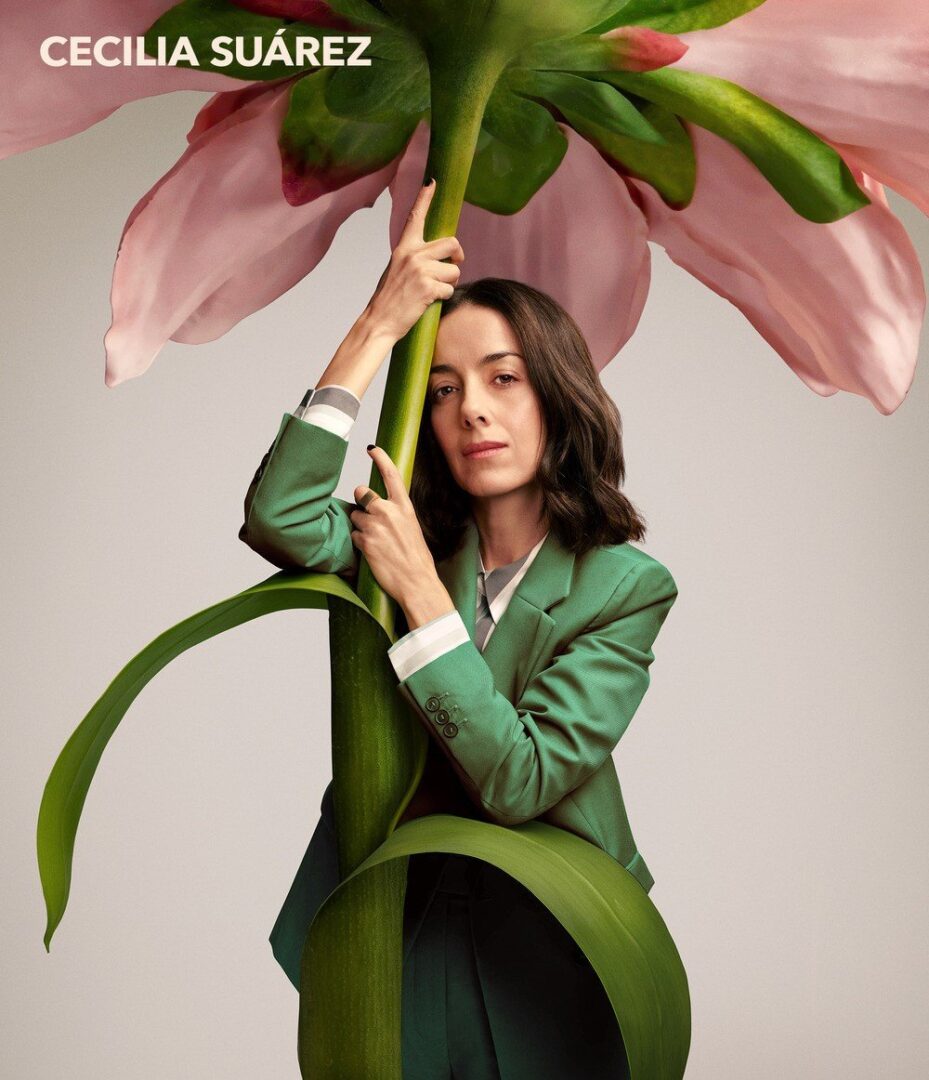
About those episode titles. They have nothing to do with the flowers in the story. It appears that someone shot the episodes, and someone else slapped flower titles on them, with meanings. An episode of Season Two titled Rose has a scene in a graveyard, with two people carrying bouquets. Both bouquets seem to have been made by the same set dresser. Both are the kind of thing you buy just outside the graveyard: pink carnations.
The episode is called “Rose,” and is about “Unity.”
There could at least have been the unity of an idea here: roses. And they should not have two bouquets … belonging to people who do not know each other, an important plot point … look alike.
In Season One, Episode Three, the older sister, Paulina, played by Cecilia Suárez, properly creates a small tabletop bouquet, on a coffee table – something we all do if we have a flower shop next door. At least the family has a maid/cook who seems to do everything in the house, and who will clean the living room after her.
Cut to Paulina carrying the bouquet, now different-looking, into the dining room, where her judgmental mother, Virginia, complains that Paulina never uses enough color. As if the da la Moras ever use enough color.
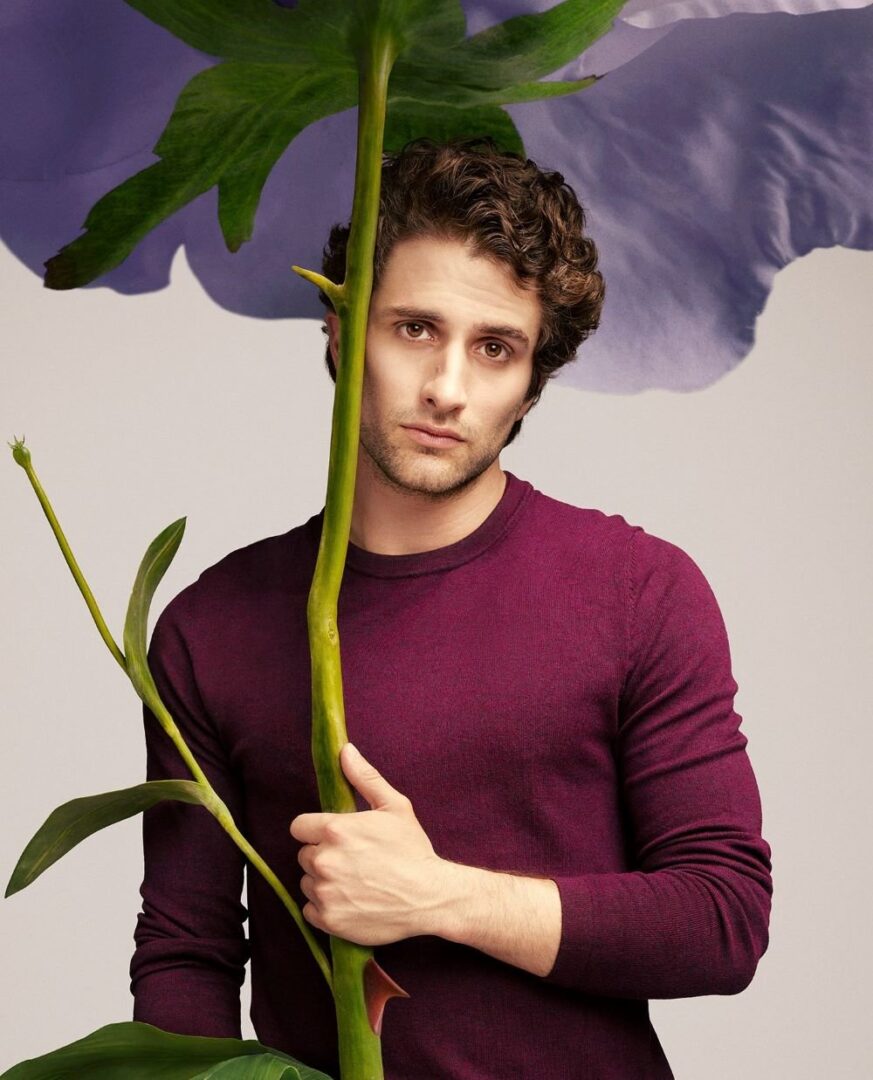
The final episode of Season One has a scene at a graveyard where Virginia, the bitter wife, brings a bouquet of her husband’s mistress’s “favorite flowers” – chrysanthemums – to her grave. The episode is called “Poppy,” which is said to symbolize resurrection. Shouldn’t the script writers have had her bring poppies? Or at least a nice bouquet of chrysanthemums. The ones she brought looked like a tired red and white dust mop.
Much to the dismay of the many fans of the first season, Verónica Castro, who played the embittered mother, did not come back for Season Two. So the flower shop and the charismatic leading woman are gone. Season Two is still entertaining, and focuses more on the 30-something doings of the attractive “children,” who include a young man with that kind of haunting, hurt beauty, Dario Yazbek Bernal.
He is the half brother of the film star Gael García Bernal, whose break-out film was “Y Tu Mamá También,” and was also in “Mozart in the Jungle.” All of the other romantic male leads have identical beards, and are hard to tell apart, except for Elena’s black fiance from America.
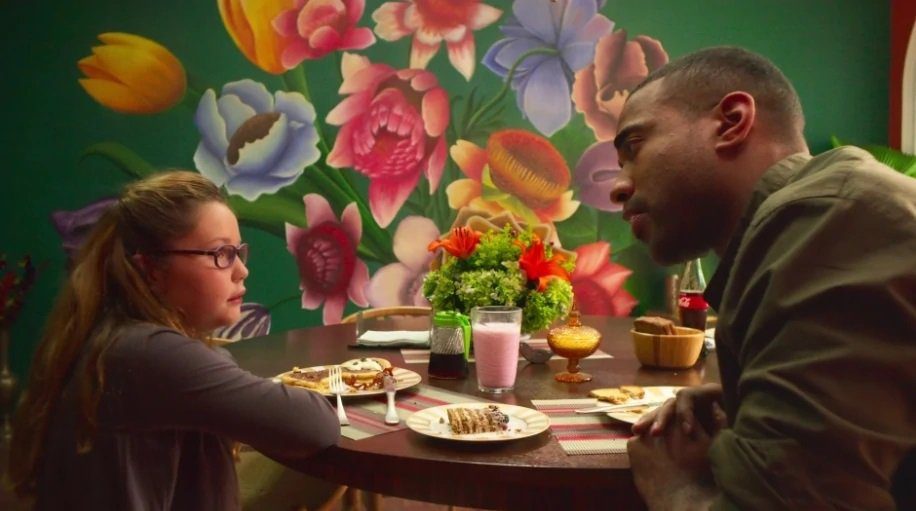
The actress playing Paulina, Cecilia Suárez, has been alternately celebrated and mocked for her somnambulant Spanish speech pattern, something the dubbing only begins to emulate. Her character grows on viewers, as she is required to be the sober one, constantly straightening out families crises, and, for instance, playing a scene involving the revelation of her parentage with a sock puppet, operated by her real father. When she is briefly transported into a showy singer with dramatic gestures, or a giddy drunk, viewers get a sense of Suárez’ gifts.
Still, it is hard to forgive the carelessness with which the designers and set decorators treated the flowers at the center of the story. They certainly splashed lots of big pictures of flowers on the walls: proteas, tulips, passion flowers and anemone. Another wall of the house has giant roses, a bit like the wallpaper of Candice Olson.
The set decorators have worked to give los Norte Americanos a dose of Luis Barragán Mexican color theory: if one strong color works, two work better. Walls are deep bottle green; sofas the color of claret wine. The people who live in this house are not afraid of living with color on their walls. Just afraid of using color in their flower arrangements. And their clothing.
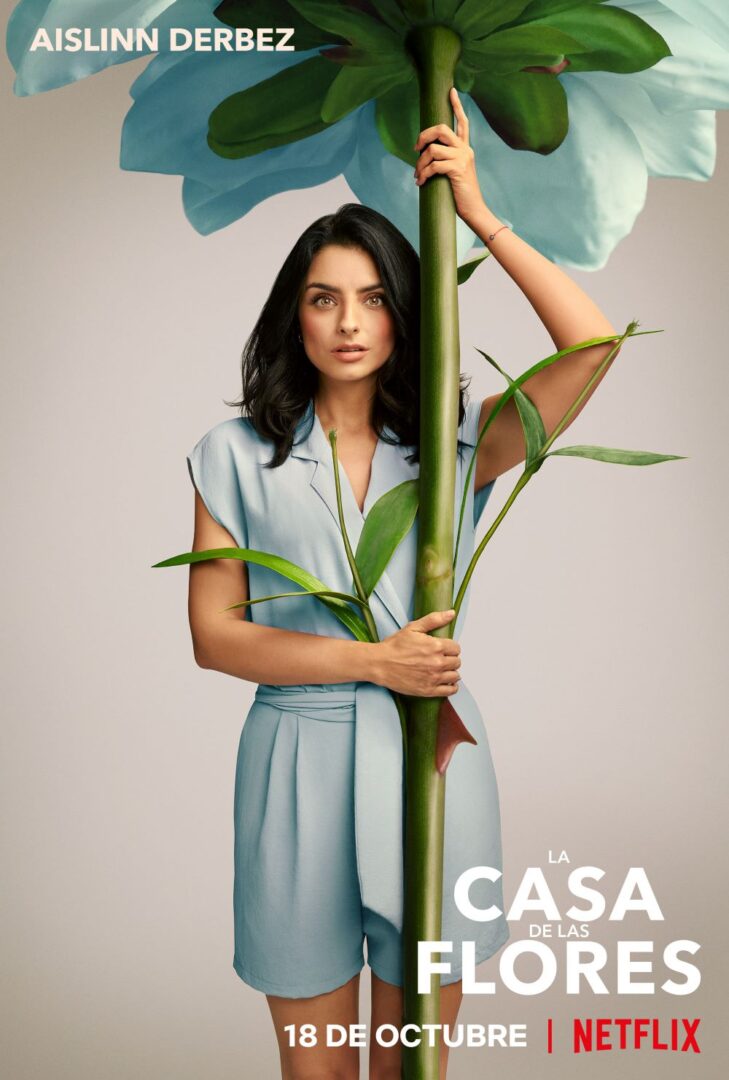
Yes, the 30-somethings wear black. (Unless Elena pulls out one of miniskirt outfits; insider note, she was pregnant in Season One, thus a lot of her scenes were shot to hide her otherwise stunning figure.) But bright interiors are not enough to warrant the title “House of Flowers.”
Netflix, if you are listening, can you do a better job with Season Three, which is now being filmed? Maybe ask Leopoldo Gomez to make a flower arrangement, or get an actual florist on set. And give that florist an on-screen credit.
Just consider the possibility that people watching something called “House of Flowers” might also care something about, you know, flowers.
Linda Lee is a former editor at The New York Times. She was the deputy editor of the House & Home section, where she edited the garden column, among other duties. She also wrote frequently for the New York Times Sunday Styles section.
